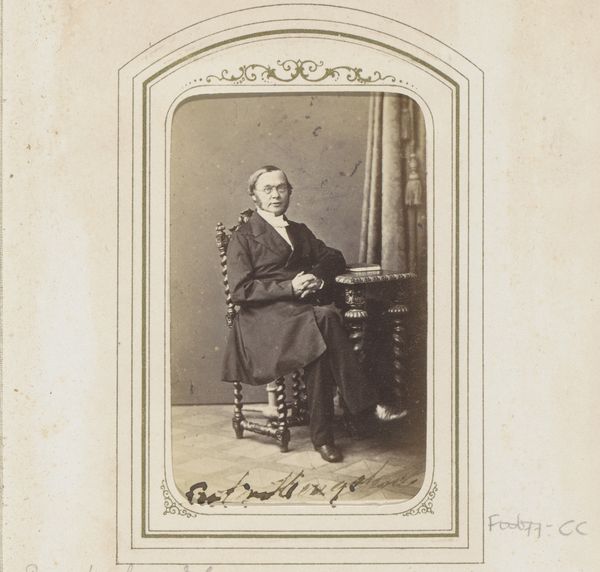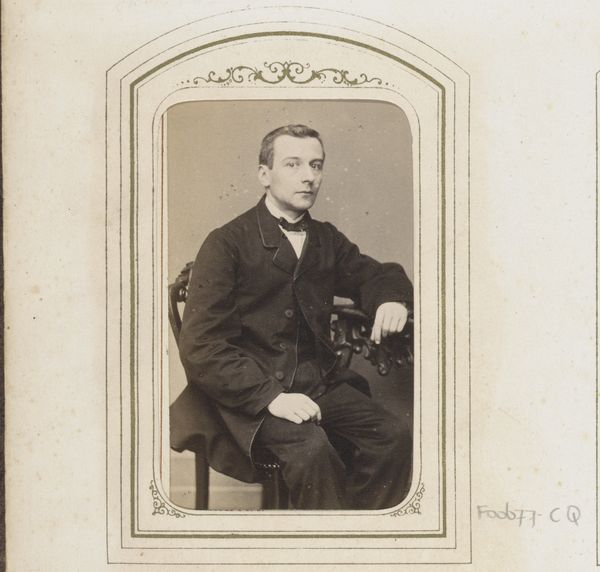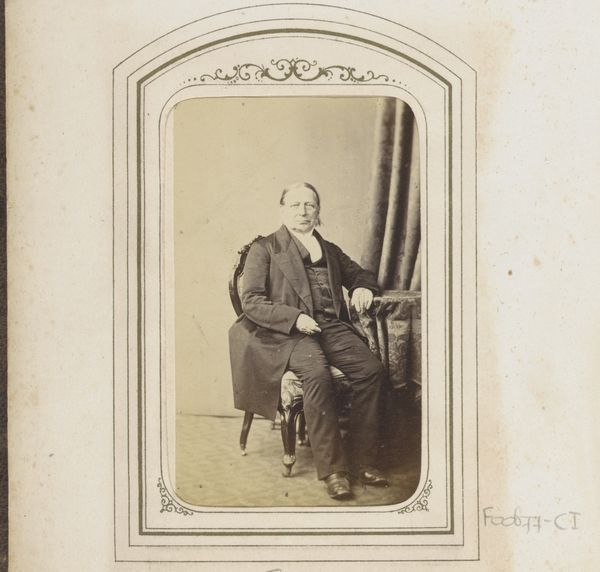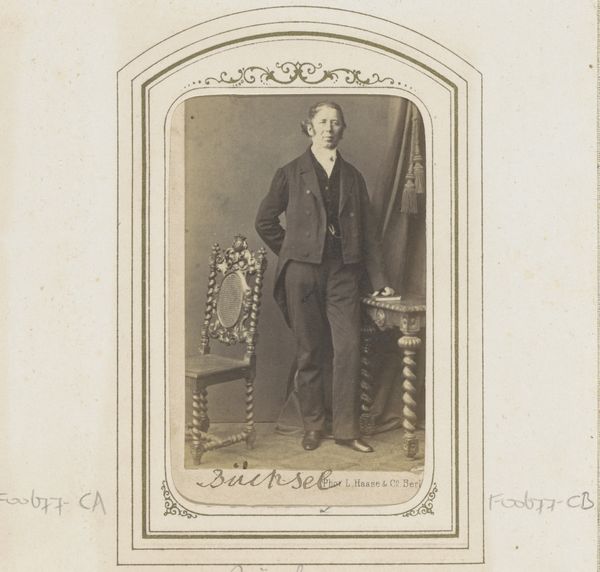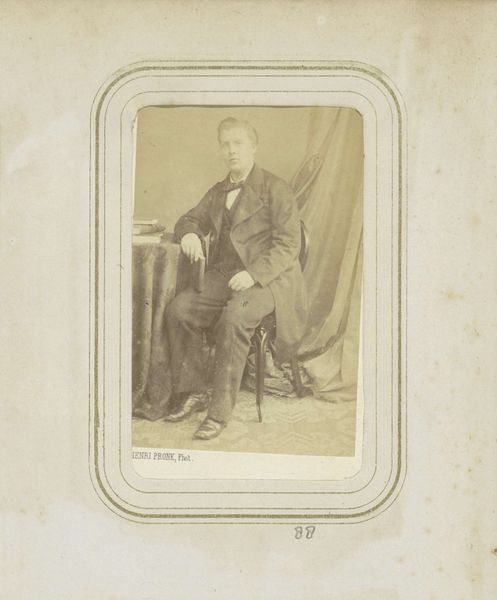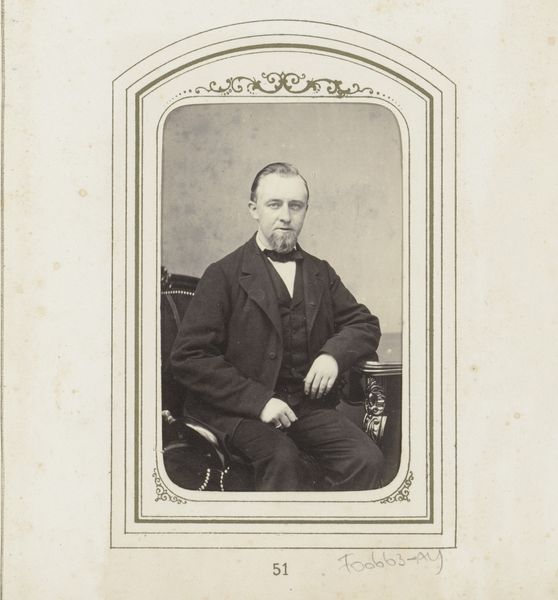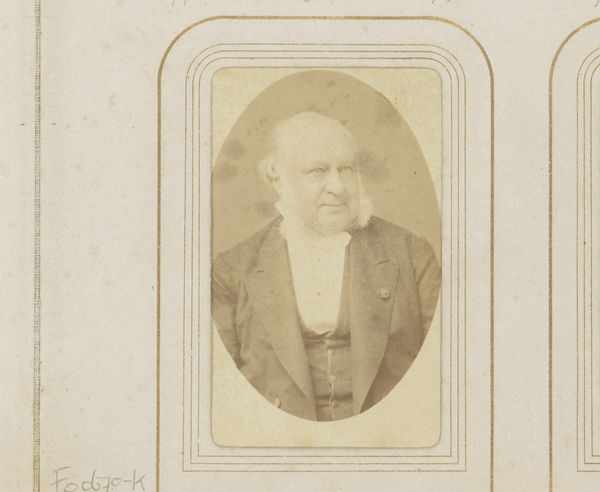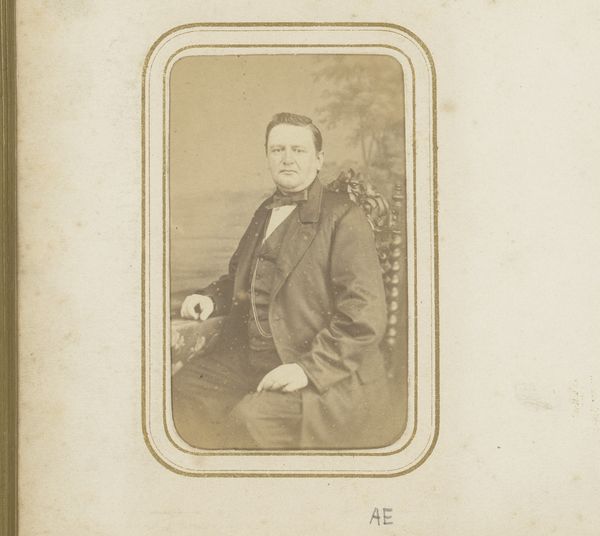
print, photography, albumen-print
#
portrait
# print
#
photography
#
genre-painting
#
albumen-print
#
realism
Dimensions: height 85 mm, width 53 mm
Copyright: Rijks Museum: Open Domain
Curator: Looking at this albumen print from the Rijksmuseum, we see a portrait of Johannes Jacobus van Oosterzee, captured sometime between 1855 and 1870. Editor: The very formal pose strikes me first—rigid, but softened a bit by that patterned table beside him and his casually crossed leg. There is a controlled vulnerability there. Curator: That control speaks volumes, doesn't it? In portraiture, pose and setting became important visual tools to convey character and social standing, echoing values of that era. The draped curtain in the background and the ornate chair…they speak to a calculated presentation. Editor: Exactly. And his dark suit is enlivened just so with a single medal pinned to the lapel. The minimal adornment allows us to contemplate who Oosterzee was. Do you see any indications of the man himself coming through this formalism? Curator: Absolutely. There’s a directness in his gaze, despite the formality. It suggests intellectual confidence, but also hints at a spiritual depth. His features—the slight furrow of the brow, the set of the lips—hint at layers beneath the surface. It’s that combination of outward control and the implied interiority that holds my attention. Editor: You are so right. The print is mounted in an elaborately decorated, almost gothic-revival style cartouche, reinforcing an almost icon-like presence. Did framing such as this also affect perceptions of this kind of photography in the 19th century? Curator: Without question. Presenting the photograph in this manner not only elevates its perceived artistic value, aligning it with traditional portraiture, but it reinforces the subject’s importance, suggesting their image deserves to be cherished and remembered within cultural memory. Editor: It feels as though this particular approach of capturing a photograph really says something important about what a society or culture values. Almost creating a secular saint to be remembered. Curator: It does indeed—it offers us clues about how that society understood the concepts of individuality and enduring legacy. Editor: This albumen print does so much more than offer a simple likeness, really it’s a study in self-fashioning in the Victorian age. Curator: I agree—a single image carrying such complex social and personal histories!
Comments
No comments
Be the first to comment and join the conversation on the ultimate creative platform.
